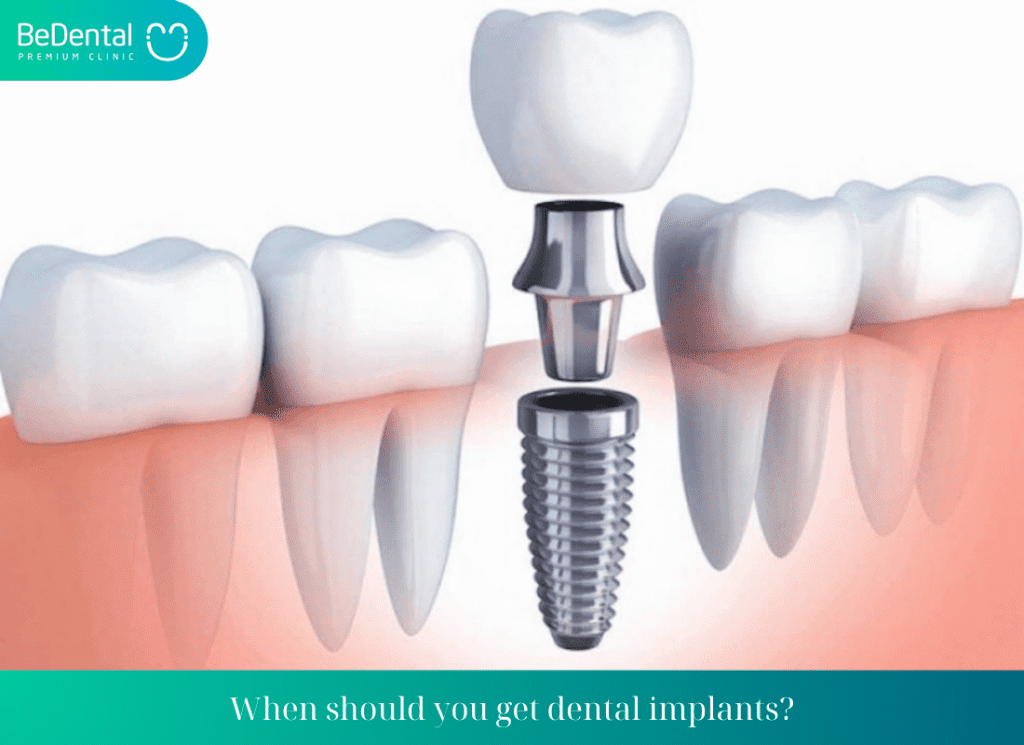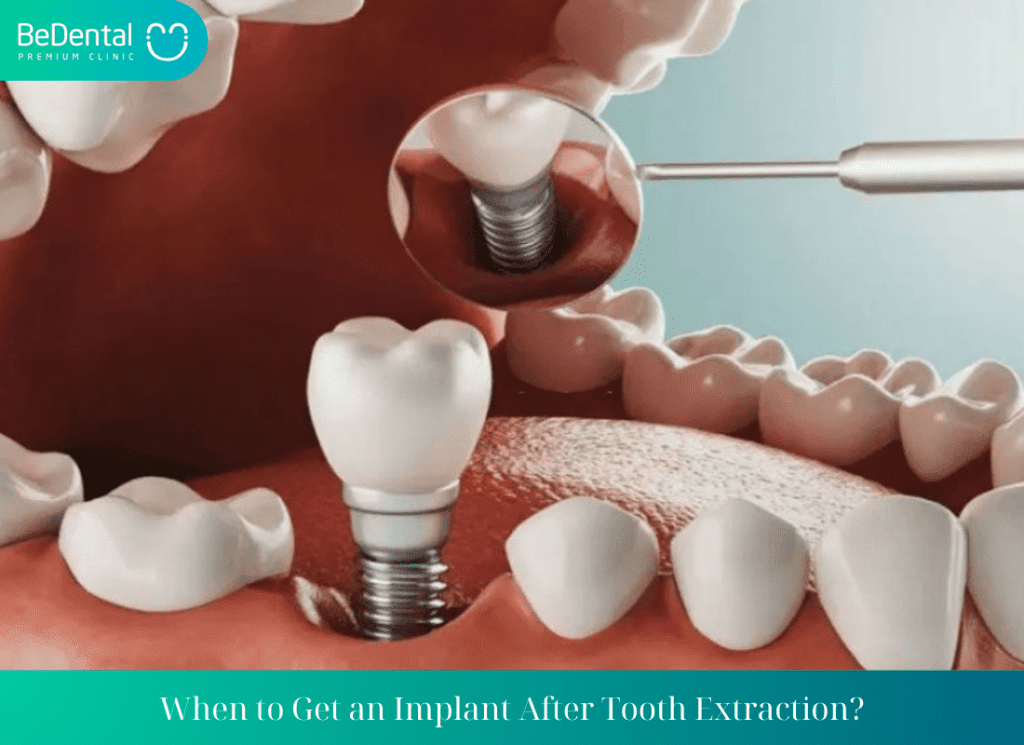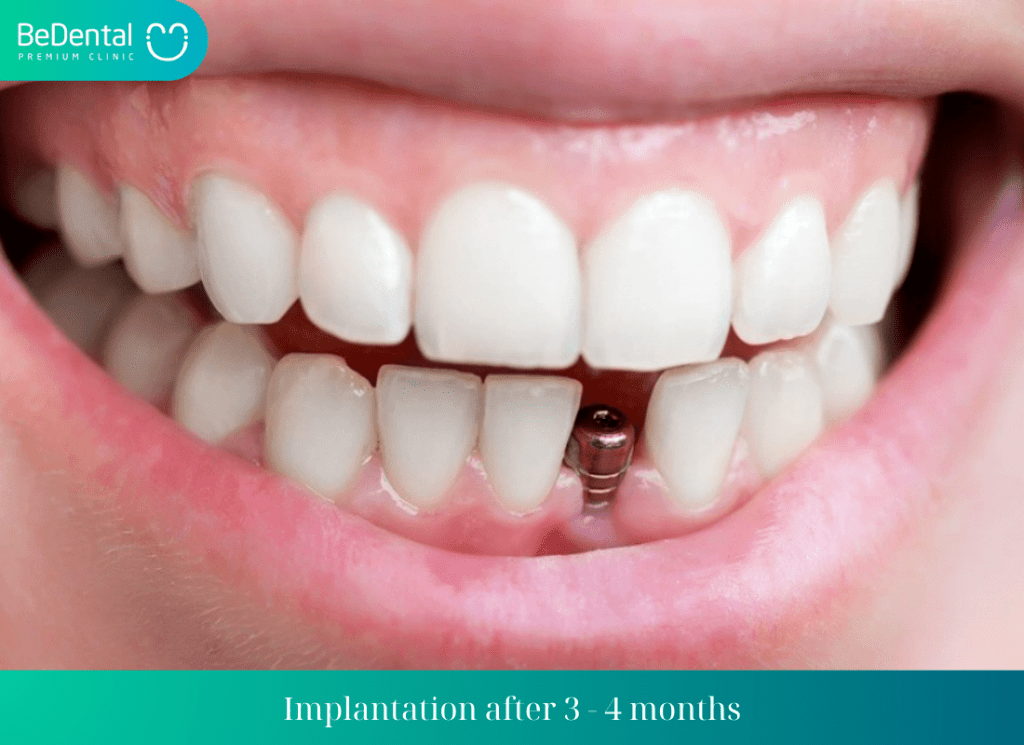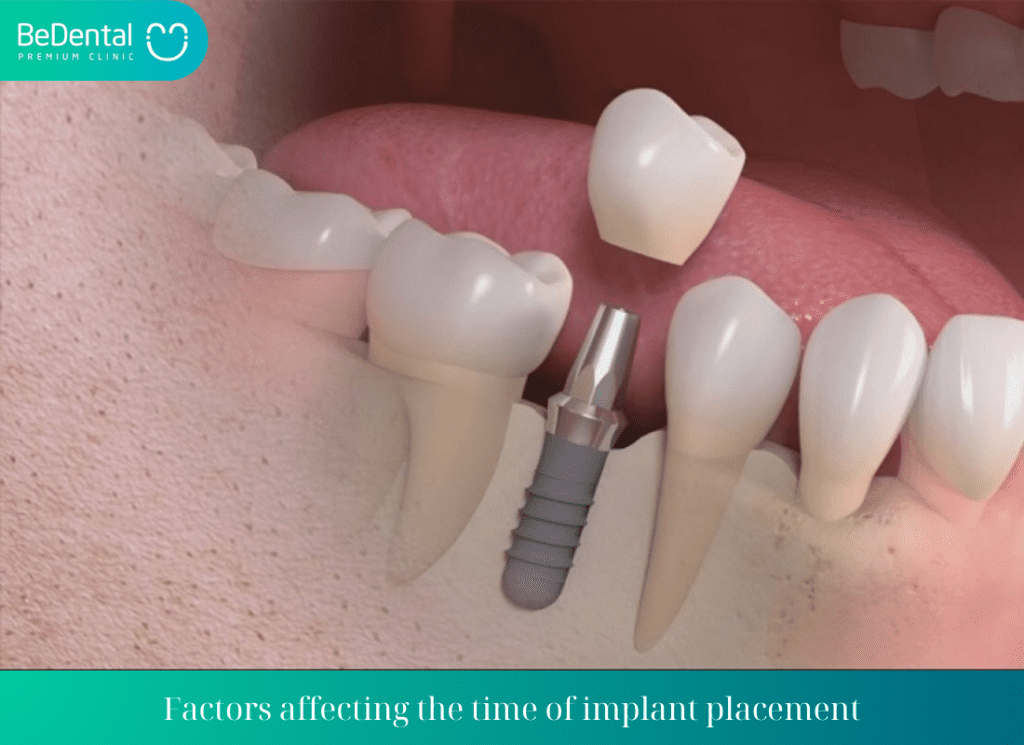Implant is considered the most advanced and excellent method for restoring lost teeth today. However, the timing of implant placement after extraction and the ideal time frame for implant placement are questions that many people are concerned about. So, when to get an implant after tooth extraction? The following article will help you find a reliable answer.
When should you get dental implants?
When should you get dental implants? Dental implants should be considered when there is tooth loss, whether it is one or multiple consecutive teeth, or even complete tooth loss in the jaw. Here are some things to consider when deciding to undergo dental implant placement:
- Implant placement immediately after tooth extraction to protect the bone.
- Prolonged tooth extraction can lead to jawbone resorption.
- Cases of tooth loss due to accidents, cavities, or periodontal disease.
- If multiple adjacent teeth are missing or complete tooth loss, dental implantation is a good choice.

Currently, there are three methods for dental prostheses including porcelain dental bridges, removable dentures, and dental implants. Regardless of age-related tooth loss, dental implants should be placed early to restore chewing function and aesthetics. Dental implantation is preferred for tooth restoration as it offers numerous health benefits such as:
- Improving chewing function and maintaining gastric health.
- High aesthetics with natural color.
- Reducing post-prosthetic issues.
- Preventing jawbone resorption complications.
When to get an implant after tooth extraction?
When to get an implant after tooth extraction? Implantation is considered the most advanced and excellent method for tooth restoration today. However, the question of the appropriate timing for implant placement after tooth extraction is of great interest to many.
To determine the optimal timing for implant surgery, you can refer to the following information:
- Implant placement should start immediately after tooth extraction.
- Implantation can be performed after 1 – 2 months.
- Implantation can be done after 3 – 4 months.
- Or implantation after 4 – 12 months from tooth extraction.
The decision on the appropriate timing for implant placement will depend on your oral and overall health condition, and will be determined by the doctor after examination.

Performing implant surgery immediately after tooth extraction
When to get an implant after tooth extraction? After a tooth extraction, many people wonder, “How long after tooth extraction can I get an implant?” or “How soon can you get an implant after tooth extraction?” In general, it is typically recommended to wait at least 2 to 4 months after a tooth extraction before placing an implant. This period allows the bone to heal and ensures that it is stable enough to support the implant. However, some patients may be able to get an implant sooner, especially if the extraction site heals quickly. Some might even ask, “Do I need an implant after tooth extraction?” or “Is it necessary to get an implant after tooth extraction?” The answer depends on individual circumstances. An implant is not always required, but it is often the best option to restore function and appearance. “Do you have to get an implant after tooth extraction?” is another common question, and the choice depends on whether the patient wants to restore the missing tooth or prefer other options like bridges or dentures.
When considering “should I get an implant after tooth extraction?“, it’s important to discuss your specific needs with your dentist. In some cases, “how long after tooth extraction can an implant be done” may depend on factors like bone quality or the need for bone grafts. It is crucial to understand that getting an implant after a tooth extraction helps prevent bone loss, which may be a concern if you delay the procedure for too long. Therefore, you may want to ask your dentist, “do I really need an implant after tooth extraction?” and explore all the alternatives.
See more: Can cavities be braced?
Implantation should be done 1 – 2 months after tooth extraction
When to get an implant after tooth extraction? This approach is often applied to patients who are not eligible or do not require immediate implant placement after tooth extraction. After about 1 to 2 months, the soft tissues and structures around the extracted tooth area have fully recovered, without any issues of damage or infection.
This ensures enough soft tissue for the recovery process after implantation and ensures aesthetics for the tooth in the future. When conditions are suitable, the implant post placement will proceed.
After 1 – 2 months from tooth extraction, the doctor will proceed with implant post placement. If there is insufficient bone, bone grafts with Collagen membrane may be used. Following this, it is necessary to wait for the implant to integrate with the bone and for the soft tissues to fully recover. The next step involves creating impressions and fitting the prosthetic tooth onto the previously placed implant post.
Implantation after 3 – 4 months
When to get an implant after tooth extraction? This timeframe is considered the best and safest choice for tooth extraction and implant placement. By this time, the wound has completely healed and is ready for the grafting process.
The soft tissue structures around the extracted tooth area have fully developed, creating an ideal environment for flap elevation and controlling bone resorption after implantation. This makes the implant post placement easier, and the dentist can easily predict to achieve long-term aesthetic results.

Implant placement from 4 – 12 months after tooth extraction
When to get an implant after tooth extraction? Data from studies have shown that after 6 months from tooth extraction, the jawbone begins to undergo natural bone resorption in the extracted tooth area. Although at this point the soft tissues and structures around the extracted tooth area have fully healed, placing an implant post during this period can help make the post more stable and secure. However, implanting a tooth at this time may prolong the treatment process due to the need to address jawbone resorption issues.
Currently, the use of artificial bone grafts has reduced the waiting time for patients, providing convenience and effectiveness in the process of fitting implant teeth. However, this may require additional costs.
See more: At what age can children get braces
Understanding the ideal timeframe for tooth implantation after extraction helps in choosing the appropriate time for treating missing teeth, while ensuring the health and aesthetics of your dental arch.
Factors affecting the time of implant placement
Beside question “When to get an implant after tooth extraction?”, you should know “What are the factors affecting the time of implant placement?”. Implant tooth implantation is now considered one of the most advanced and modern dental methods, helping to overcome the disadvantages of traditional tooth implantation methods.
In addition, the use of implants also minimizes the risk of complications in the process of restoring lost teeth. However, due to the application of modern technology and the use of imported dental posts, the cost of tooth implantation is usually higher than traditional tooth implantation.
Implant tooth implantation is becoming increasingly popular, leading to an increase in questions surrounding this modern dental method. One of the common questions is “When to get an implant after tooth extraction?”

In cases where patients have good jawbone quality and healthy soft tissues, no oral diseases, and meet the conditions for implant placement, dentists often recommend implantation immediately after tooth extraction on the same day.
However, in most cases, it is recommended to wait from 2 to 6 months after tooth extraction. The purpose is to allow the socket and jawbone to fully recover, creating the best conditions for the implant grafting process.
See more: Why do gums swell when getting braces
The article has answered the question of when to get an implant after tooth extraction? However, all the statements above are for reference only. Therefore, in summary, the appropriate time to implant after tooth extraction will depend on many personal factors. After examination, the dentist will make the best decision for each specific case.
Tư vấn chuyên môn bài viết:
BÁC SĨ DƯƠNG THỊ THÙY NGA





